The Line Experience
Diriyah Biennale Foundation
7120 Muhammad Ibn Rashid Al Uraini
Al Diriyah Al Jadidah, 2598
Riyadh 13732
Saudi Arabia
Open through April 29
By now we’ve all seen the renders of The Line, the 170 kilometer–long city currently being built in the northwestern part of the Kingdom of Saudi Arabia (KSA) as the banner project of the NEOM megaregion. First comes the luxury island resort Sindalah, opening in 2024, followed by the ski resort Trojena in 2026, and then the floating port city of Oxagon, fully built by 2030, alongside The Line’s first phase. It is unclear when The Line will be completed—not that it matters: Unlike these other, more tangible developments, The Line primarily functions on a symbolic level as a synecdoche for the future of Saudi Arabia.
NEOM—NEO-Mustaqbal, or “new future”—is part of Vision 2030, the Saudi blueprint to diversify its economy away from oil and, in doing so, rebrand the country. Much of its promotional material has been calibrated for international consumption, down to the schmaltzy deployment of “What a Wonderful World” in an early advertisement. Sindalah, the “yachting gateway to the Red Sea,” has been particularly criticized on social media for its use of overwhelmingly white models. How is NEOM marketed to domestic audiences? An answer arrives in The Line Experience, a free, traveling exhibition which previously spent fortnights in Jeddah and Dhahran.
I recently visited the iteration on view in Riyadh, which opened in November 2022 and runs for six months. I wondered how the project—and by extension its promise of the country’s future—would be sold to Saudis, whose buy-in is imperative for Vision 2030 to succeed. How convincing might it be given the extended delays of the Riyadh Metro, another major Vision 2030 project? And just how closely would it hew to the spectacular green(ish) model of state-sponsored futurism that I’ve come to think of as the Khaleeji Ideology, in which money—and state power—accumulate to the point that they boil over into spectacular renders?
In Riyadh, KSA’s capital, visitors enter The Line Experience through a mirrored false front that rises above the adjacent warehouses in the once-industrial-now-creative Jax District. In the expansive lobby, massive screens loop commercials for Oxagon and Trojena, while backlit vertical ads proclaim bromides like “environmental solutions to urbanism” and “clean air for everyone.” The messaging has the distinct feeling of bus shelter posters and seem perfectly proportioned to go straight from storyboard to Instagram story. There are mirrors everywhere inside too, to help you see yourself in this future.
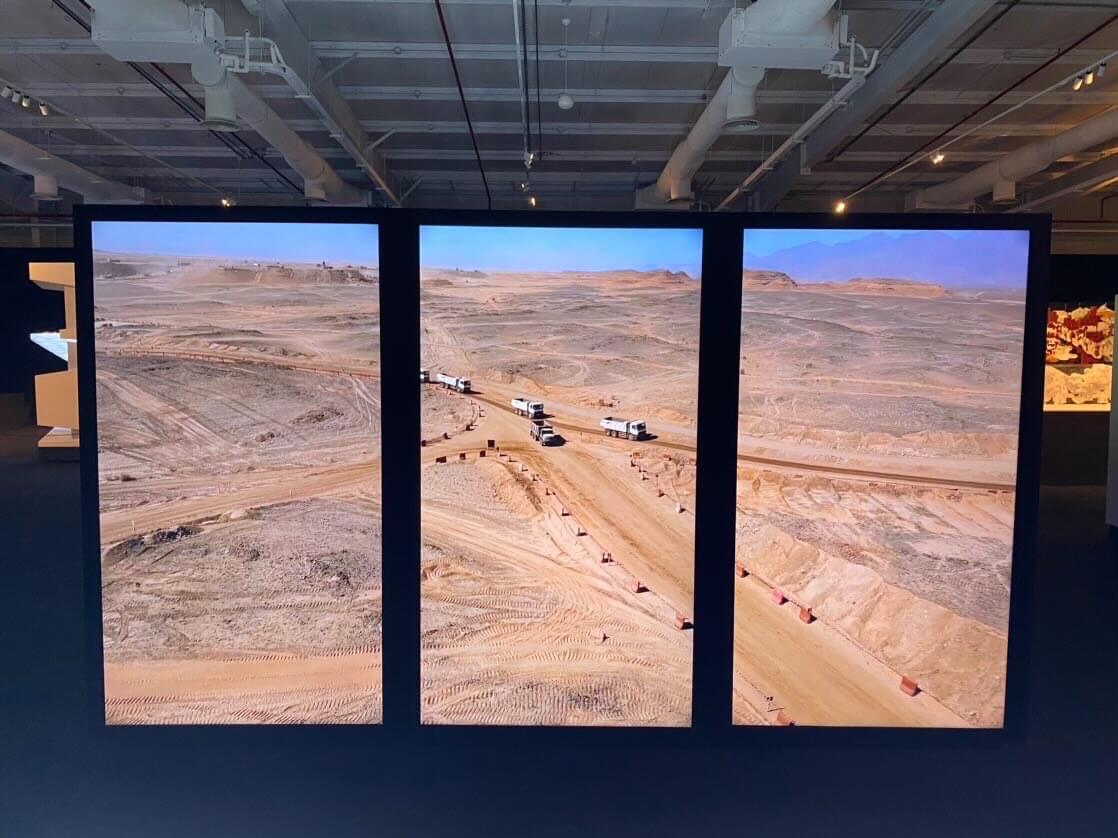

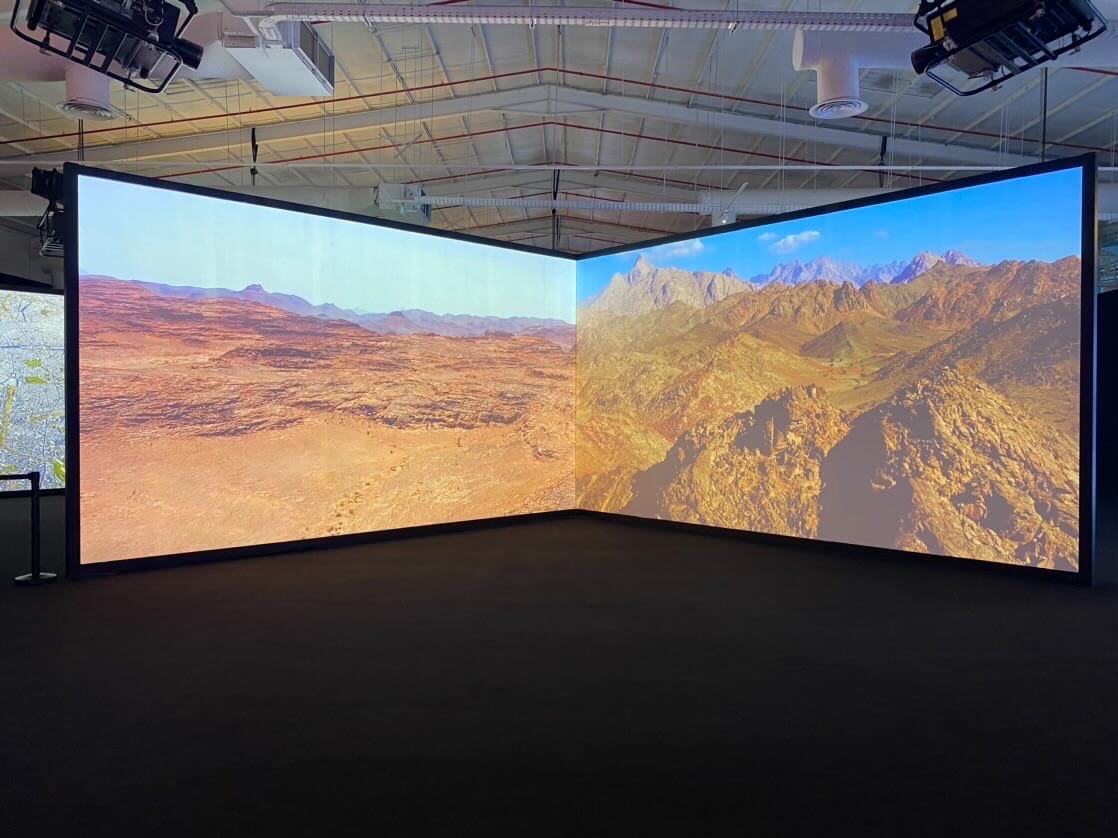
The show is divided into five, immaculately produced, black-box zones. The first of which locates The Line within NEOM, replete with majestic pans over the rocky Hisma Desert. This section is laid out like a pitch deck, unfolding over more backlit displays. Here are the challenges of unfettered growth, and here comes NEOM with its somewhat abstract solutions in SEO-optimized form: nature and protection, people and livability, progress, and innovation. Here are the requisite vertiginous drone’s eye view videos, swooping dizzily through heavily landscaped buildings that bizarrely resemble cheese graters. Most interesting is a backlit map that labels neighboring countries and seas, with the glaring exception of both Israel and Palestine. A sign of the normalized relations that are expected to follow? When in doubt, leave it blank.

The “Livability Principles” zone moves from powerpoint presentation to tourism brochure, which features a sea of lightboxed renders with banal captions like “Exceptional architecture” and “View from yacht at the North Bay.” More impressive is the “Hidden Marina diorama”—a massively scaled-up model, replete with plasticky landscaping which resembles a cross-section of The Line. You could walk through it. I overhear two men ask a docent how The Line plans to maintain all the trees against dust. I think they are talking about the model at first, but she replies that “they’ll figure everything out, because they’re trying to protect the world, they’re not trying to make it a problem, so they’re going to fix it.” She sounds like she really believes it too.
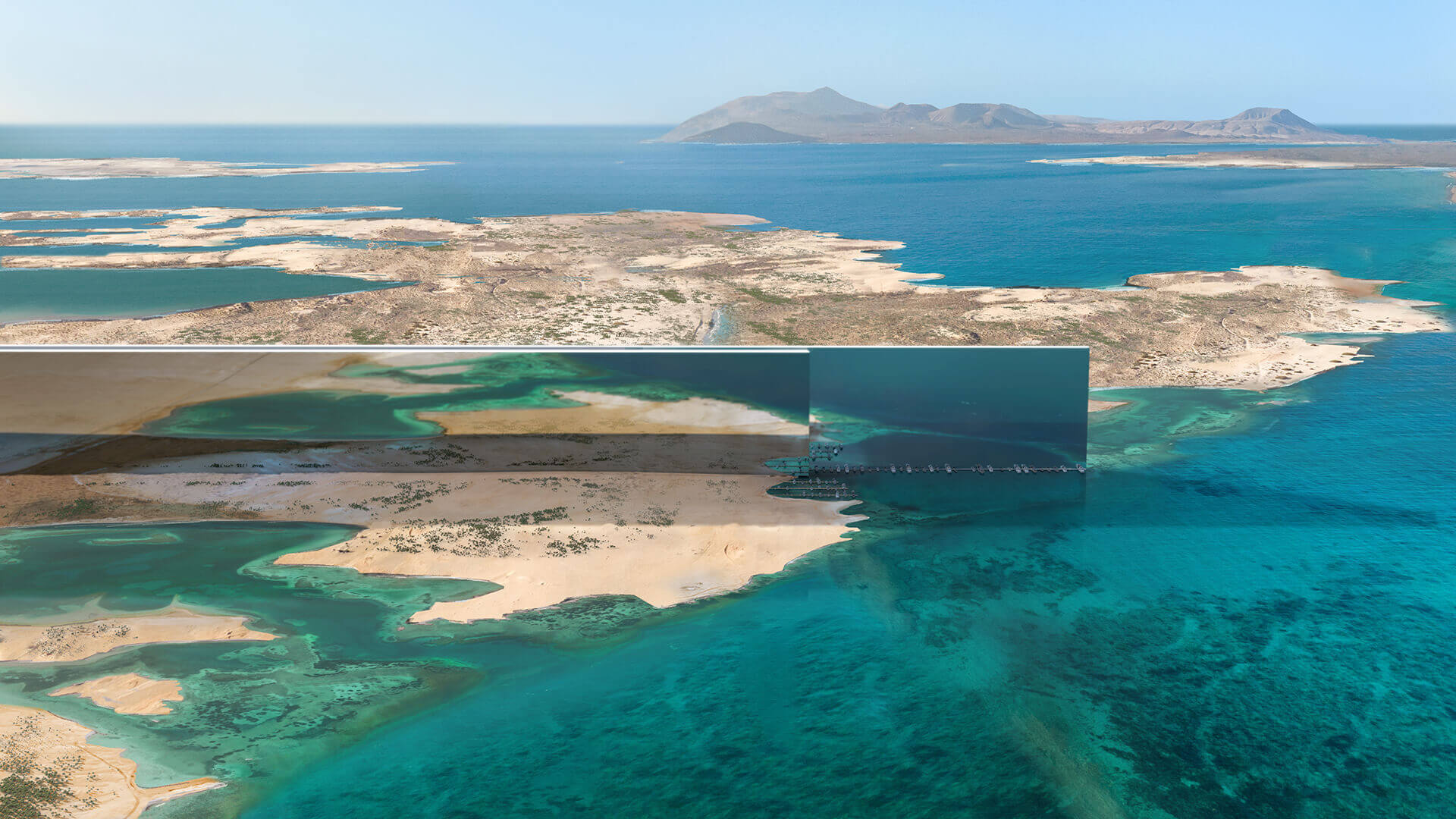
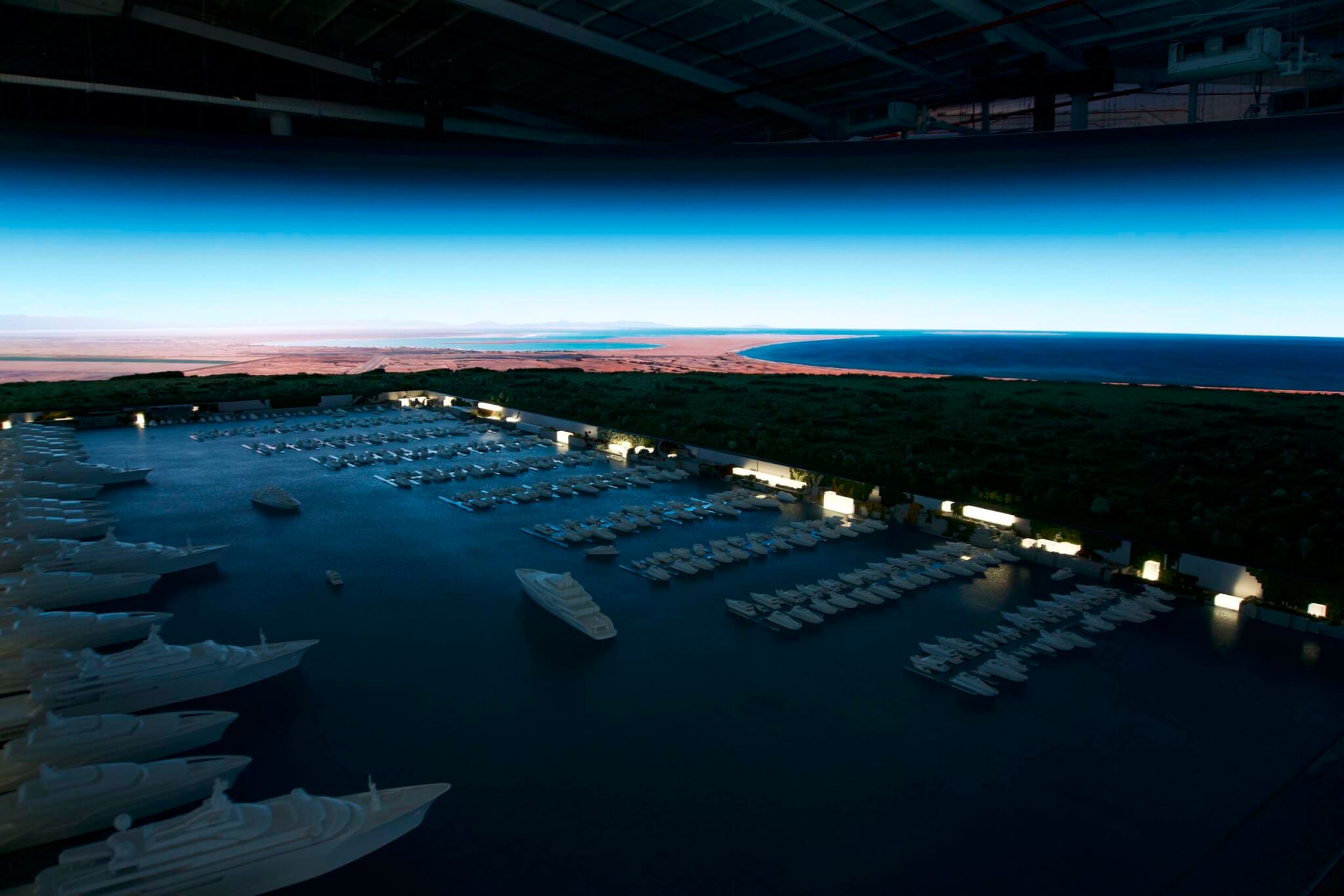

There are some attempts at localization. Videos include regional statistics like Gulf Cooperation Council–wide diabetes stats, and rewilding fantasy animations where major cities, including Riyadh, are condensed into The Line, which cuts through pristine nature These videos reveal the conceit at the heart of the project and its much-repeated talking point that 95 percent of nature is preserved—not through any kind of active stewardship but by simply not building on it. The fourth zone is dedicated to the megaregion’s flora, as seen on the LED video walls playing lush footage of desert flowers. It’s the kind of display that looks best from a distance, with imagery dissolving into small dots when you get up close, which feels a little on the nose. Two parallel lightboxes highlight these almost-100-percent-preserved plants with a photo and scientific taxonomy. The show hammers home logics of surface and form.

A last, sprawling zone is dedicated to large-scale models from 12 firms who did at least schematic work on the project, opening with a broody names-and-faces lineup display: Morphosis, Tom Wiscombe Architecture, Oyler Wu Collaborative, Pei Cobb Freed & Partners, HOK, Adjaye Associates, UNStudio, OMA, CHAP (Peter Cook), Coop Himmelb(l)au, Studio Fuksas, and Delugan Meissl Associated Architects. Some—particularly Fuksas’ vertical modules that look like they have been ravaged by an alien chicken-of-the-woods and OMA’s terraced tea garden-like stadiums—are pleasingly yeehaw, although most propositions could easily be characterized as a future-skinned office park. Still, if the UAE pioneered the gamified edutainment model of exhibition design in the region, as recently exemplified by the Museum of the Future, Saudi seems to have perfected it.

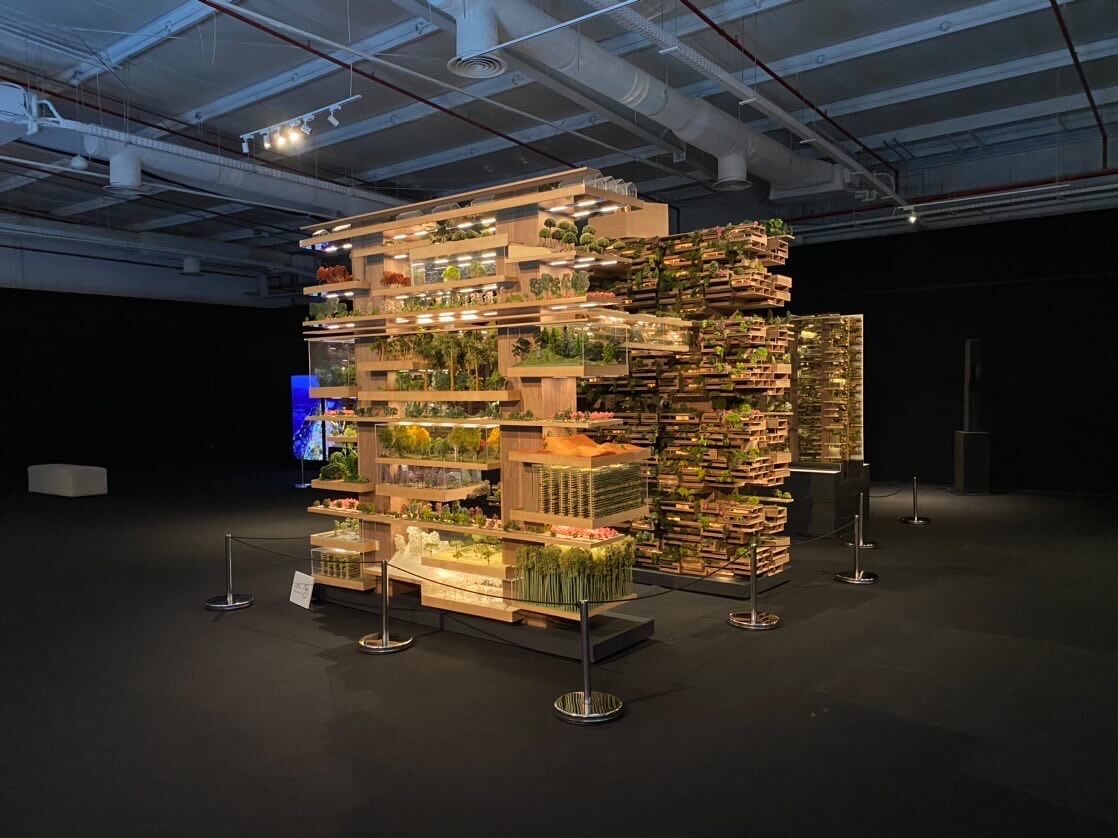
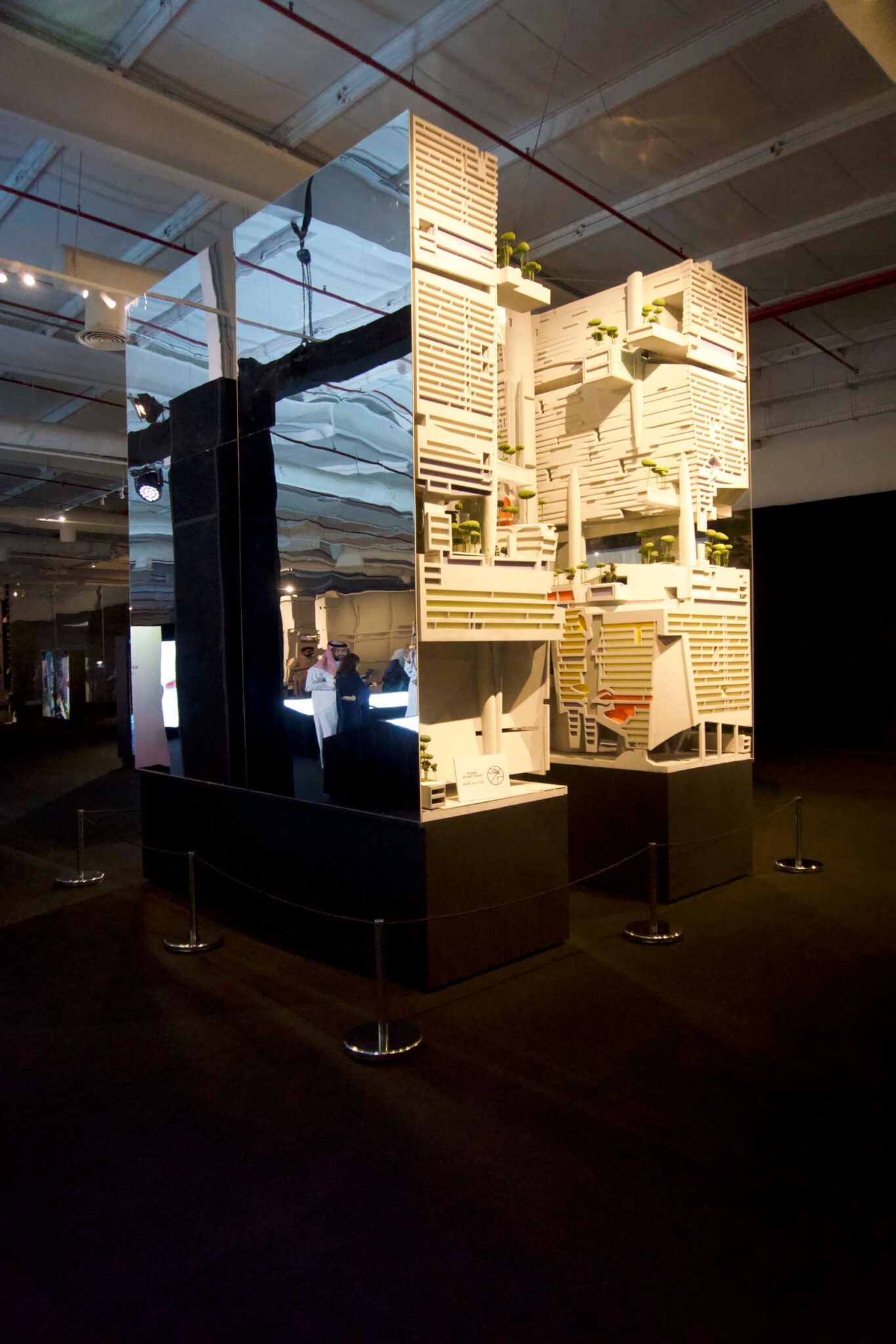

I had a genuinely great time at The Line Experience. Despite repackaging fairly tired ideas and the obvious critiques of governmental power or environmental concern made elsewhere, the exhibition creates an overall effect where the future remarkably doesn’t feel dog-eared or Space Age–y at all, but shiny and just silly enough to be, well, fun.
But I was shocked to see that the flora display, apart from wayfinding signs, is the only place in the exhibition that includes any Arabic text, which makes me again wonder: Who is this show’s audience? Investors, certainly, and especially from the immediate GCC region. But as for local visitors, the question remains: Whose line is it anyway?
Rahel Aima is a writer from Dubai.











